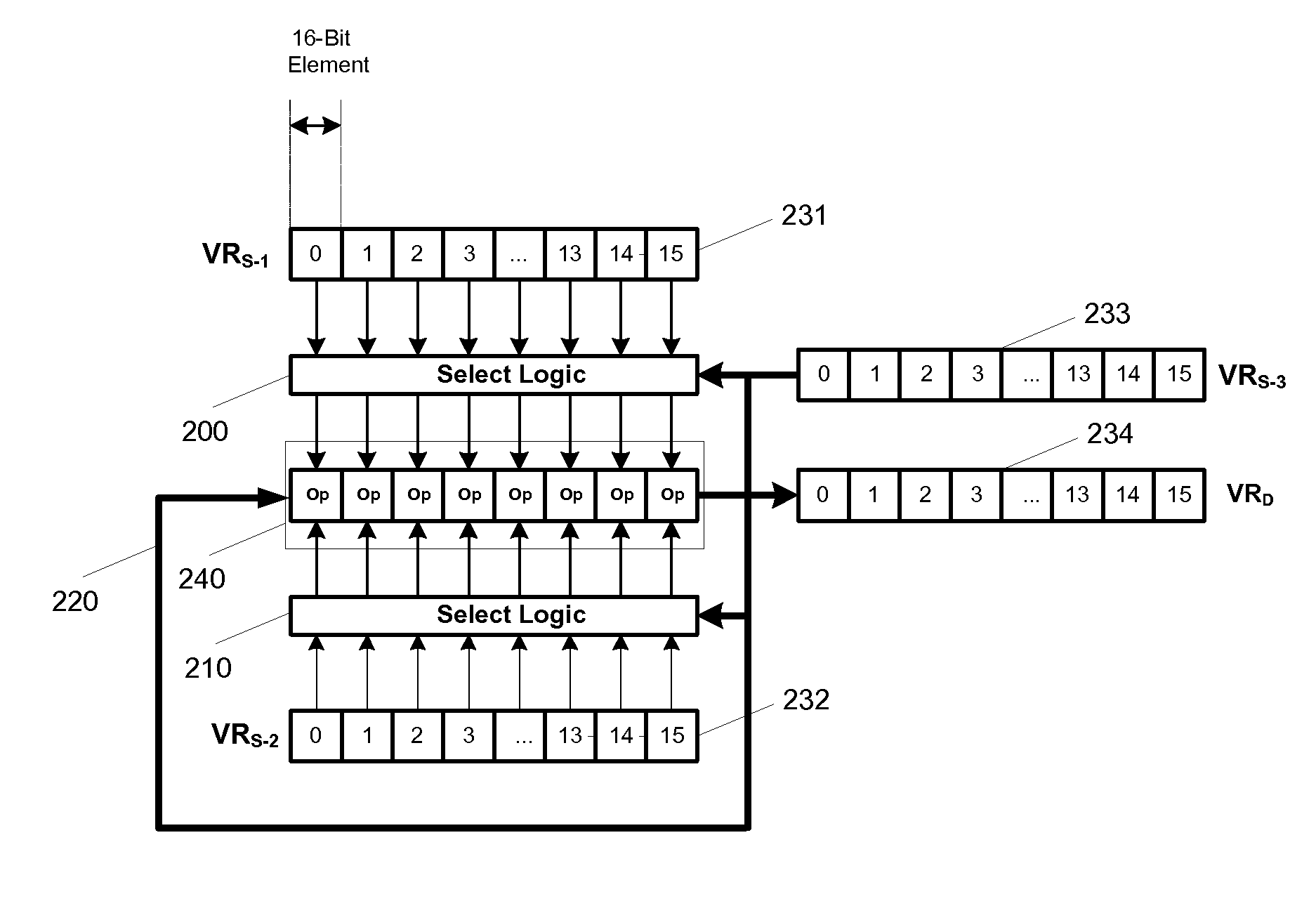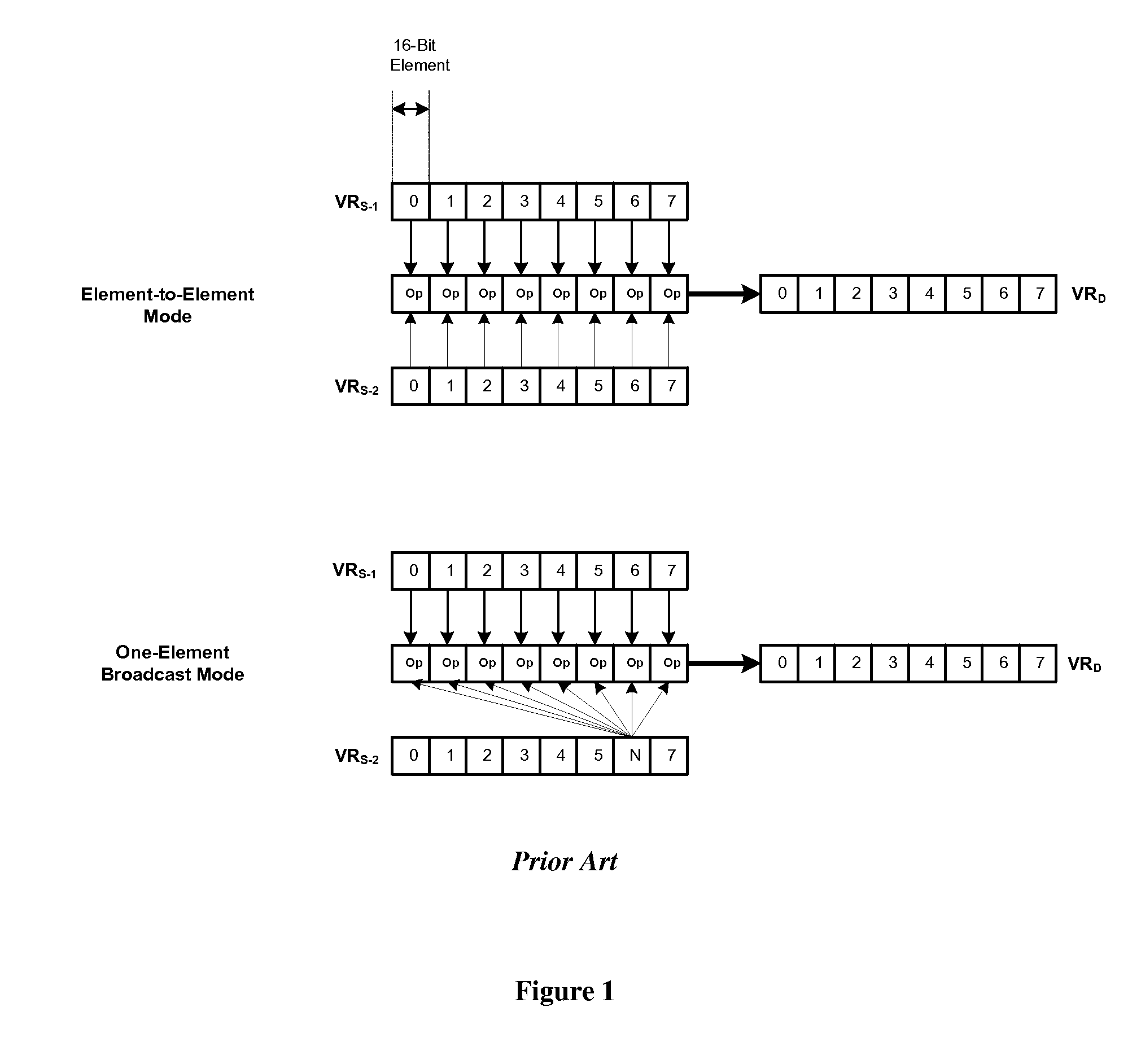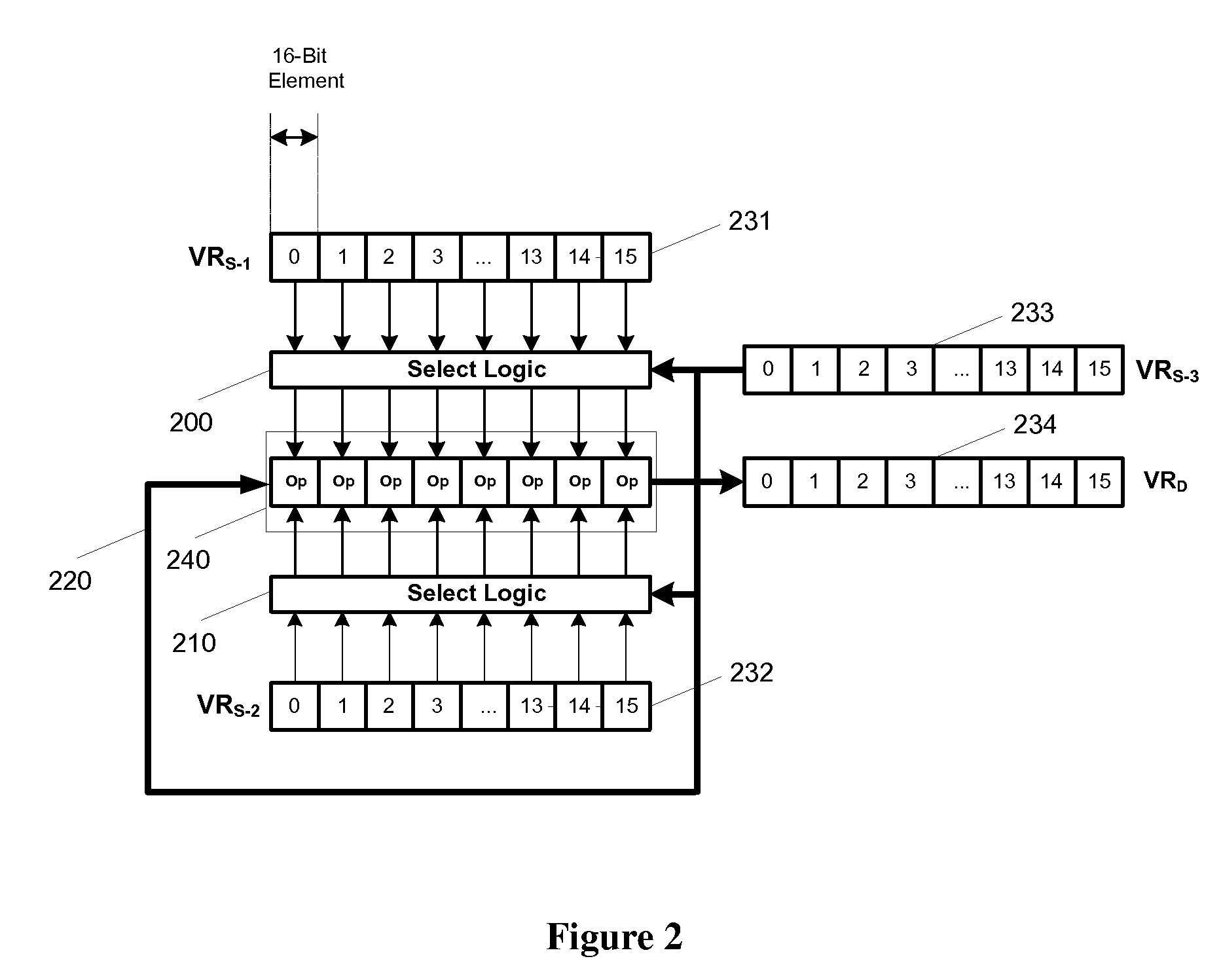Flexible vector modes of operation for SIMD processor
a vector mode and processor technology, applied in the field of processor chips, can solve the problems of imbalance where load operations cannot be “hidden”, leave multiple computational units idle, and slow processing time significantly
- Summary
- Abstract
- Description
- Claims
- Application Information
AI Technical Summary
Benefits of technology
Problems solved by technology
Method used
Image
Examples
Embodiment Construction
[0016]The present invention provides an efficient way to pair any of first source vector elements, VRs-1231, with any element of a second source vector element, VRs-2232 for vector operations such as vector-add. vector-multiply, vector-multiply-accumulate, under the control of a third source vector element, VRs-3233 for vector operations 240 (shown as “Op” for each vector element position), as shown in FIG. 2. Control source vector elements of VRs-3233 could also choose a different operation for each vector element position. Select logic 200 will select vector elements of VRs-1, and select logic 210 will select vector elements of VRs-2 for pairing, the selected pairs of source vector elements as inputs to inputs of vector operation unit 240. The result of the vector operation is stored in destination vector register VRd 234 in accordance to a mask bit and selected condition flag(s).
[0017]Vector registers, source vector registers VSs-1, VRs-2, VRs-3 and destination vector register VR...
PUM
 Login to View More
Login to View More Abstract
Description
Claims
Application Information
 Login to View More
Login to View More - R&D
- Intellectual Property
- Life Sciences
- Materials
- Tech Scout
- Unparalleled Data Quality
- Higher Quality Content
- 60% Fewer Hallucinations
Browse by: Latest US Patents, China's latest patents, Technical Efficacy Thesaurus, Application Domain, Technology Topic, Popular Technical Reports.
© 2025 PatSnap. All rights reserved.Legal|Privacy policy|Modern Slavery Act Transparency Statement|Sitemap|About US| Contact US: help@patsnap.com



